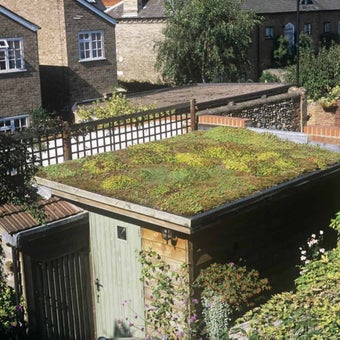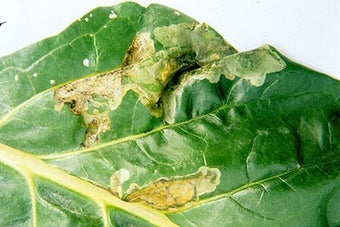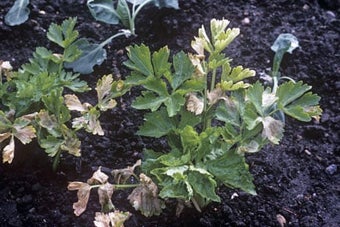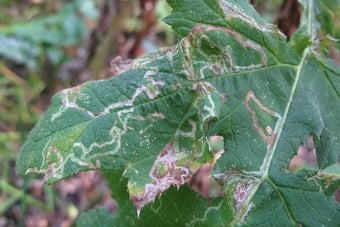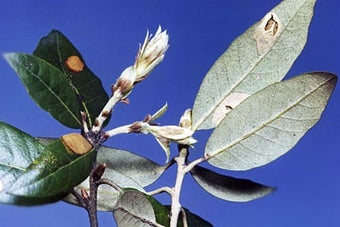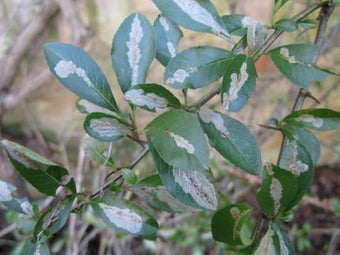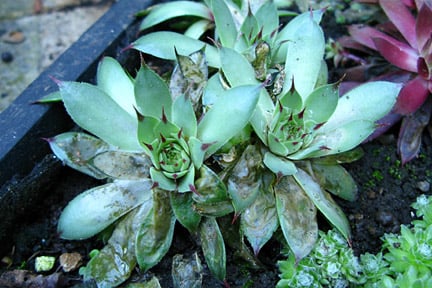
Quick facts
Common name - Sempervivum leaf miner
Scientific name - Cheilosia caerulescens
Plants affected - House leeks (Sempervivum tectorum, S. arachnoides and S. montanum)
Main symptoms - Outer leaves wilt and discolour; may contain larvae
Most active - May to June and August to September
What is sempervivum leaf miner?
Sempervivum leaf miner is a hoverfly that as a larva mines the leaves of Sempervivum species.
Hoverflies are true flies and belong to the order Diptera, family Syrphidae. There are more than 6000 species of fly in Britain of which over 280 are hoverflies. Hoverflies get their name from their ability to hover in mid-air. Many hoverflies mimic wasps, honey-bees or bumble-bees with stripes, bands and markings of black and yellow. Sempervivum leaf miner is a small bluish grey species. Adult hoverflies are pollinators and the larvae of most species are predators or help recycle organic matter (detritivores), very few feed on living plant material. Read more about hoverflies.
Nearly 900 other insects, including some beetles, sawflies and moths create leaf mines as larvae more information about some of these insects can be found at The leaf and stem mines of British flies and other insects.
Symptoms
You may see the following symptoms:
- The outer leaves on affected house leek become greyish or brownish-green where the internal tissues have been eaten
- Damaged leaves go limp before drying up
- Small rosettes may be killed
- If a larva has left a leaf to move to another, or to pupate in the soil, there will be an exit hole near to its base
- Damage is mainly seen in mid-May to June and again in August to September
- The adult is similar in appearance to other small blue-grey hoverflies
Over-watering or poor drainage can cause similar symptoms to sempervivum leaf miner, however closer examination should reveal the presence of plump whitish maggots, up to 8-10 mm (about 3/8 in) long, inside some of the damaged leaves.

Management
Leaf mining insects can usually be tolerated and can be part of a healthy balanced garden ecosystem.
- Most leaf mining species have natural enemies including parasitoid wasps. Birds such as blue tits can sometimes open mines to consume the larvae within
- If desired damaged leaves and larvae can be removed when they are found
Biology
The adult fly is 8-10 mm (approx. 3/8 in) long and is black with short whitish hairs on the thorax and abdomen. Eggs are laid on the foliage of house leeks in late spring to early summer, with a second generation in late summer.
After hatching, the larvae bore into the outer leaves and eat out the internal tissues. Each larva will mine several leaves before it is fully fed and ready to pupate in the soil.
Adults of the second generation emerge in July to August and further larval feeding occurs in August to September. This pest overwinters as pupae in the soil.

